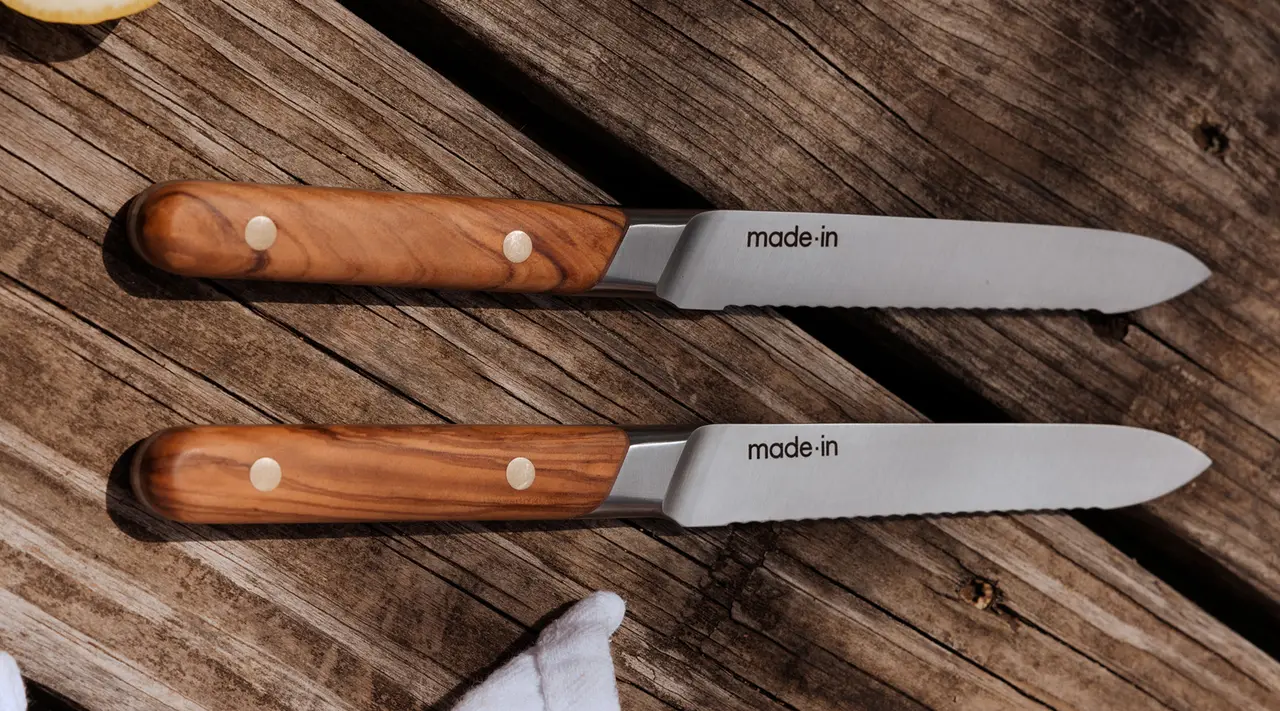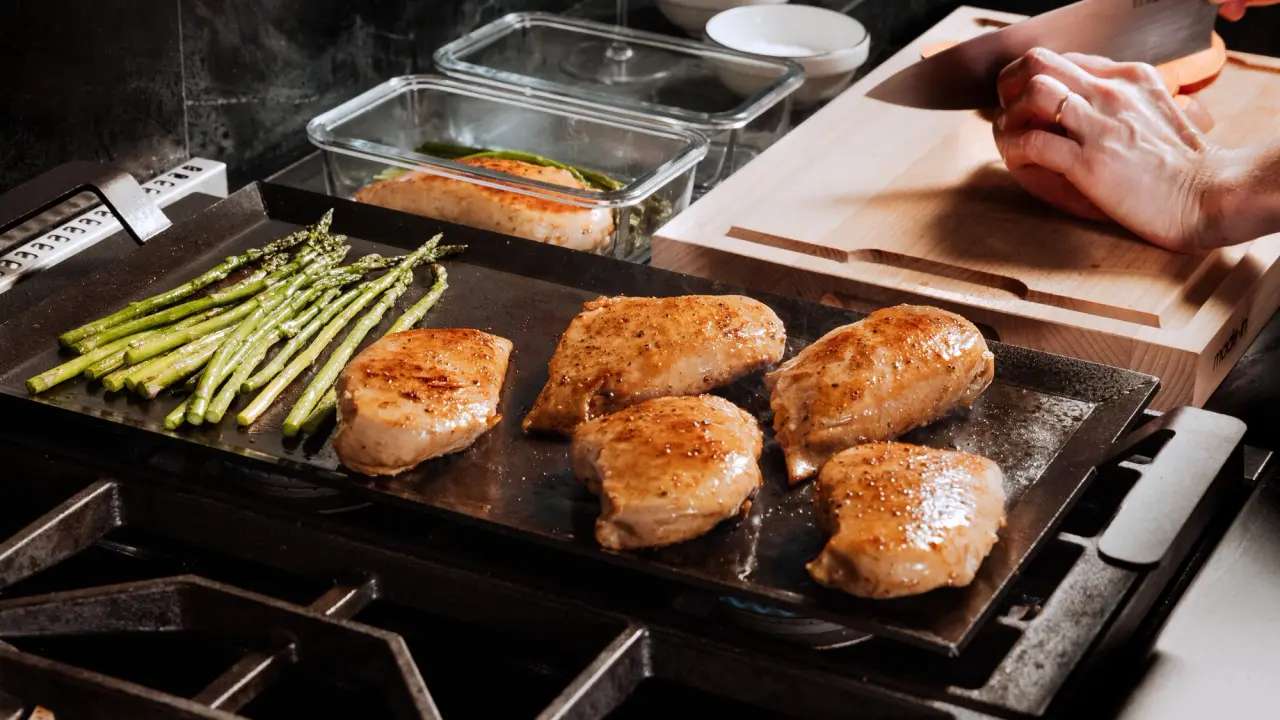Just like every tool in the average toolbox has a specific purpose, every knife in a knife block is constructed to excel at one or two tasks. While many home cooks are tempted to use whatever knife looks like it’ll get a job done in the kitchen, you’ll be able to unlock a deeper understanding of certain skills by using your knives as they were intended.
Today, we’ll be discussing the difference between two common knives: the utility knife and the chef knife.
In short, the chef knife is larger, broader, and built with a slight curve that allows its user to perform a “rocking” motion and make quick work of many medium- to large-sized ingredients. The utility knife, on the other hand, is slightly smaller, often serrated, and easier to maneuver for precision cuts compared to the chef knife.
Keep reading for more information on each knife and how to use them.
What Is a Utility Knife?
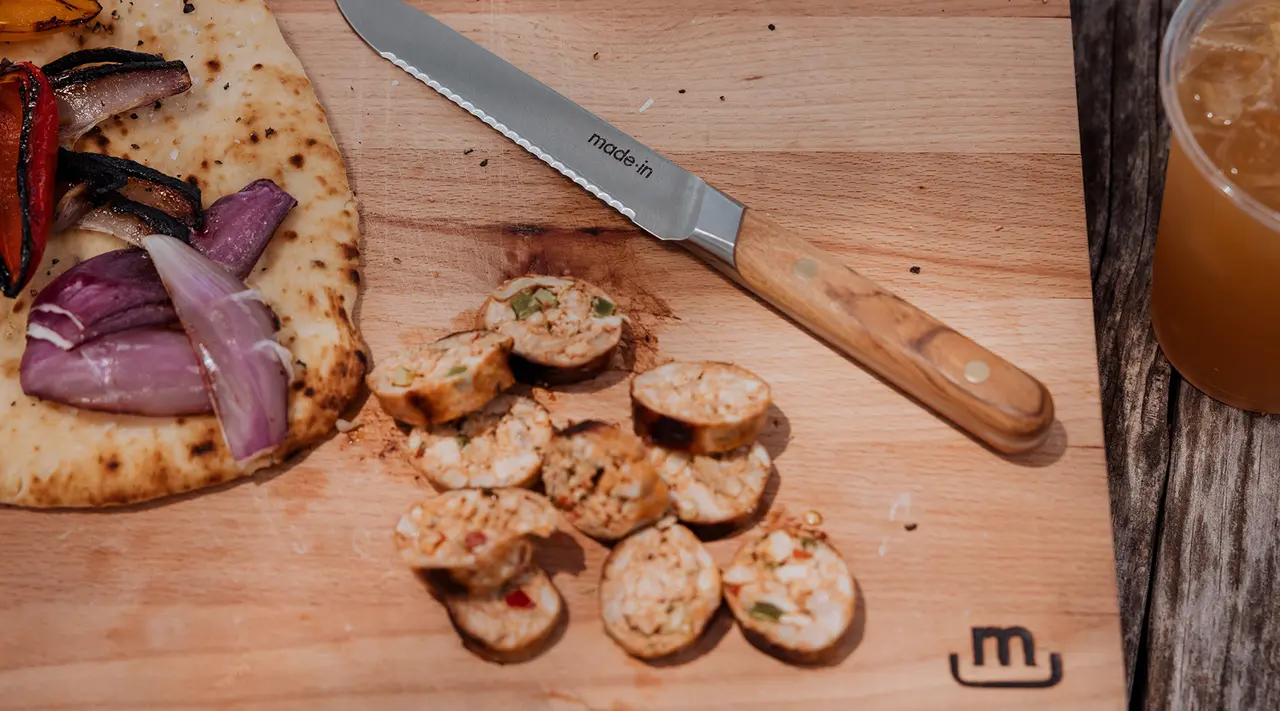
Due to its smaller size—approximately 4 to 9 inches in length—the utility knife is built to give its user exceptional leverage across a variety of tasks, like chopping smaller produce or slicing bread. Designed to be pragmatic above all else, this is the knife you’ll want to bring on a hike, to a picnic, or in your beach bag to enjoy charcuterie al fresco.
Often (but not always!) serrated, the utility knife is intended to handle just about any task you need it for, food-related or not. While our preferred use is slicing summer sausage (for a cheeseboard) or cutting through the tough skin of citrus (for a cocktail), we can confirm that our Utility Knife is suitable for shotgunning.
Utility Knife Advantages
- A utility knife is highly versatile both indoors and out.
- Its small blade makes excellent precision cuts.
- The serrated edge adds further durability and utility—you never know when (or where) it will come in handy.
Utility Knife Considerations
- Due to their smaller size, utility knives aren’t the best choice for slicing large ingredients.
- Utility knives are role players, meant to be useful in an incredible array of applications—but they don’t excel in any one area.
- While the knife’s serrated blade can come in handy, it may be a disadvantage while chopping hard and dense ingredients where force is required.
What Is a Chef Knife?
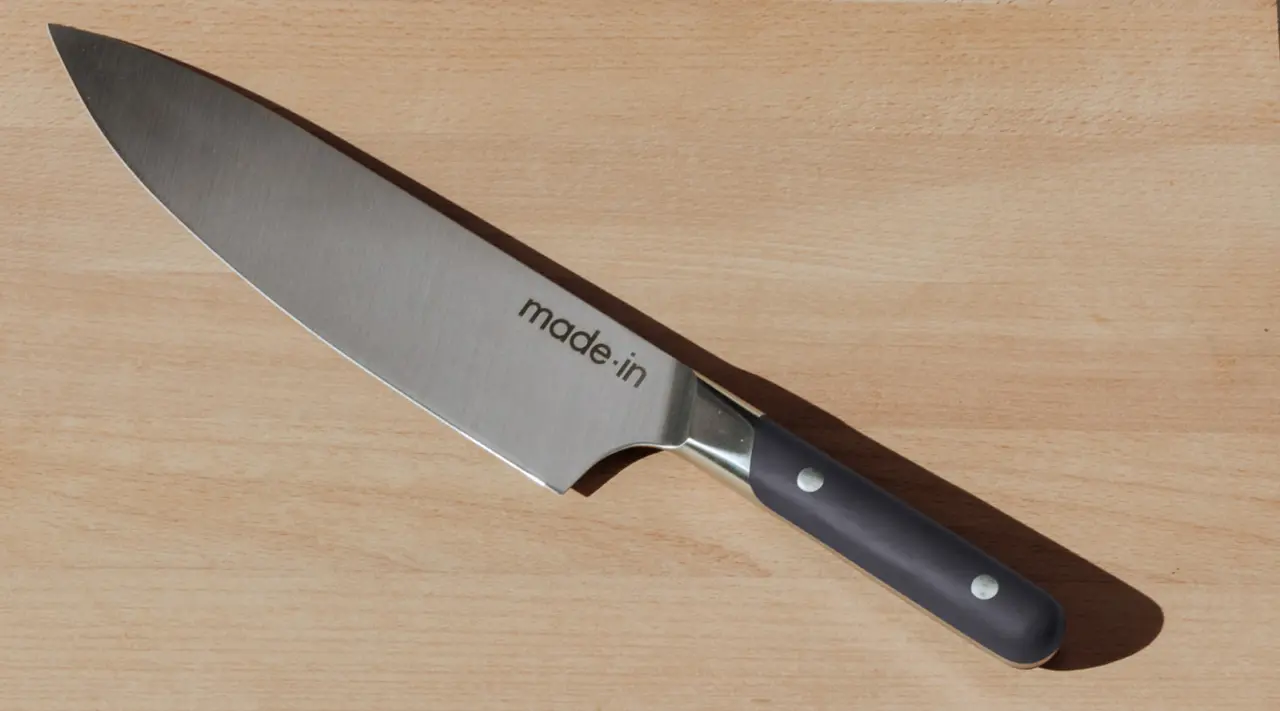
Known as a kitchen workhorse, a chef knife ranges from 6 to 14 inches in length and has a broad, almost triangular blade. In Western kitchens, this is the blade we most commonly think of when we hear the word “knife.” Its slight curve allows cooks to use a highly efficient “rocking” motion, which makes it possible to process ingredients very quickly.
Chef knives are the perfect tool for chopping large fruits and veggies, such as broccoli, cauliflower, melon, celery, and much more. Beyond produce, they’re equally adept at slicing and breaking down large cuts of meat.
As the chef knife is pretty much the only tool in the kitchen that you’ll be sure to use nearly every time you cook a meal, it’s important to purchase a high-quality blade. A well-made knife features a blade that goes all the way to the end of the handle (this is called “full tang,” and it creates a sturdier, stronger knife) and is fully forged with a single piece of metal for durability.
Chef Knife Advantages
- Chef knives are incredibly strong and built to accomplish tedious tasks quickly.
- Chef knives are versatile, and their heft means they have enough leverage for more arduous cuts.
- Aptly named, this is considered a foundational blade and absolutely essential for professionals and home cooks alike.
Chef Knife Considerations
- A Chef Knife isn’t the best tool for tasks requiring precision or detail.
Key Differences Between a Utility Knife and a Chef Knife
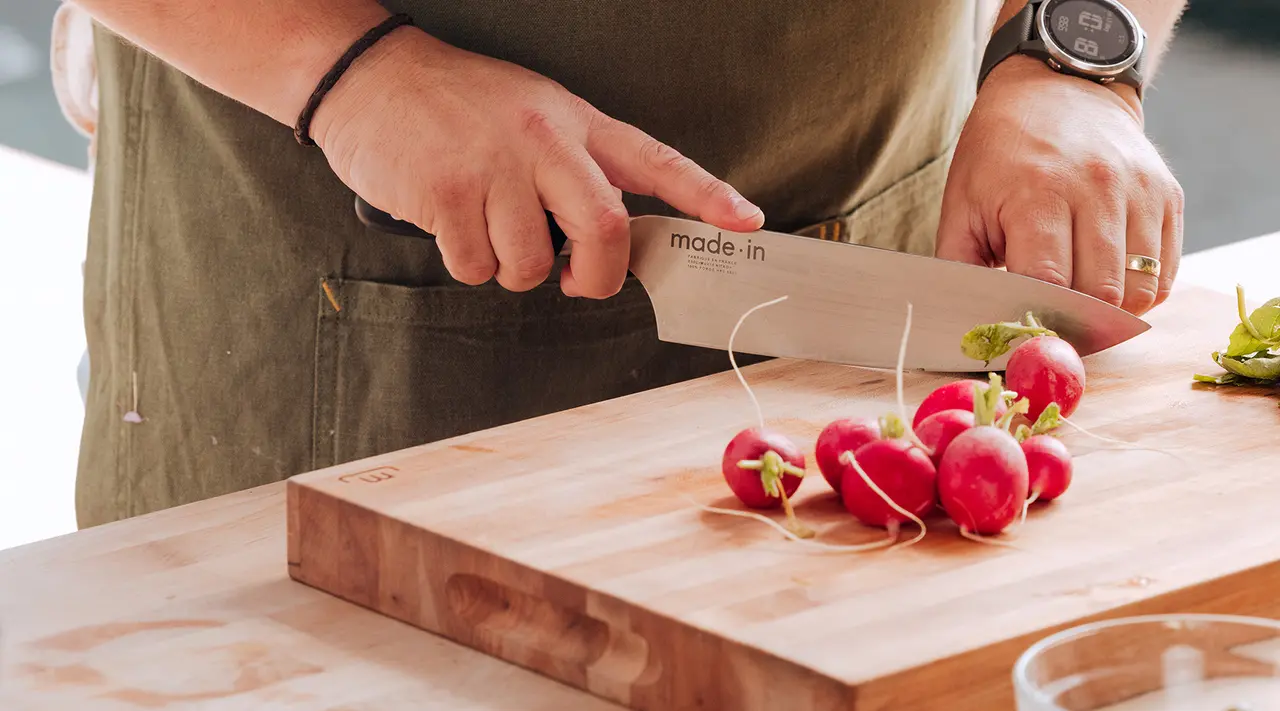
The biggest differences between a utility knife and a chef knife are the sizes, styles, and functions of each knife’s blade.
Since chef knives have a bigger, broader blade, they’re able to chop and slice larger quantities faster. Also due to its bigger size, it features much less precision. A utility knife, on the other hand, has a much smaller (and often serrated) blade that’s designed to get the job—any job—done.
Which Knife is Right for You?

While deciding whether you want our Chef Knife or Utility Knife, consider what your needs are in the kitchen—or outside of it.
If you’re an aspiring Top Chef looking to make lavish meals for friends and family, a new high-end Chef Knife might be all you need. However, if you often find yourself on the go but are still unwilling to leave meals up to chance, or if you’re constantly finding odd jobs that need something a bit more rugged, the Utility Knife is a compact and easy-to-store choice for keeping your options open.
Ready to Shop?
While both knives have their own advantages and disadvantages, they’re a dream team when paired together and used properly. Make sure your kitchen is equipped by taking a look at our Chef and Utility Knives, each one designed to be of the highest quality and crafted by skilled artisans in the knife capital of the world: Thiers, France.
